DELVE INTO THE IDEAS FROM TWO WINNERS OF RE-IMAGINING THAI SOCIAL SPACE: CITY FESTIVAL AS DESIGN INTERVENTION BY MQDC
TEXT: PRATCHAYAPOL LERTWICHA
PHOTO CREDIT AS NOTED
(For Thai, press here)
Places and locales like Siam Square remind people of street performances, just as Chareonkrung has been associated with Bangkok Design Week and Lumpini Park with events such as the Red Cross Fair or Music in the Park.
While these festivals and events take place over a set period of time, they function as a mechanism that brings people from all walks of life together, adds vibrancy and excitement to a community, and provides economic opportunities while contributing to a neighborhood’s distinctive character and a city’s livability.
Following the success of ‘Uniquely Thai: Envisioning the 21st Century Bangkok’s Civic Center,’ a design competition seeking ideas to develop Bangkok’s public spaces, real estate development firm MQDC returned with ‘RE-imagining Thai Social Space: City Festival as Design Intervention.’ This latest design competition by MQDC welcomes young generation designers to present their ideas for design festivals and public/social spaces to foster a more inviting city to live in, with this year’s winners already revealed.
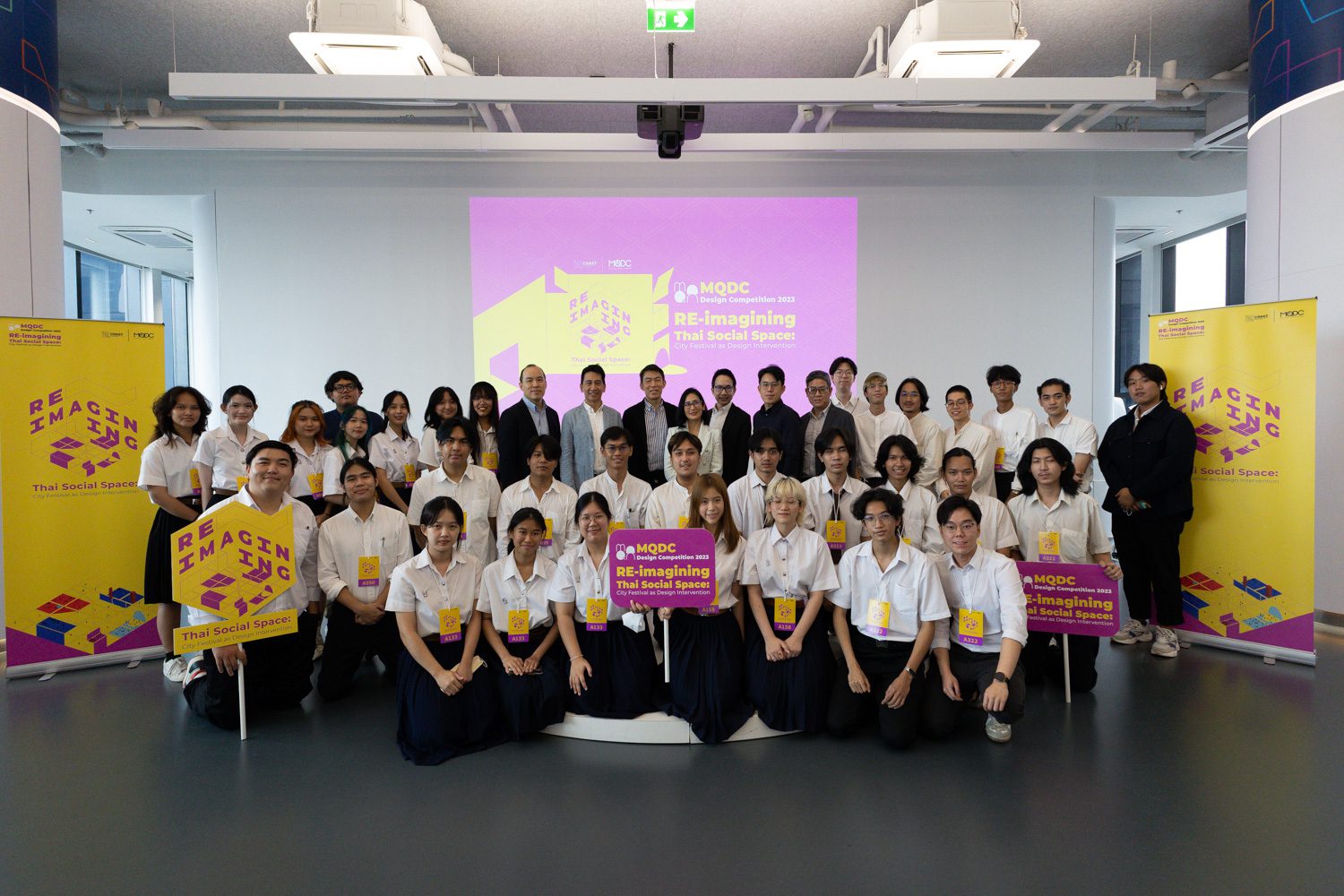
Photo: Don Amatayakul
“The cities with the highest ranks on the best cities to visit list are those with high-quality public spaces. Bangkok and other Thai cities were rarely at the top of the list. We have cities where people may live and work and cities that are famous tourist attractions, but they still lack quality social spaces. This is why we came up with this project, which aims to find new ideas in urban development,” remarked Dr. Karndee Leopairote, Executive Vice President of FutureTales Lab by MQDC and a member of the judging panel.
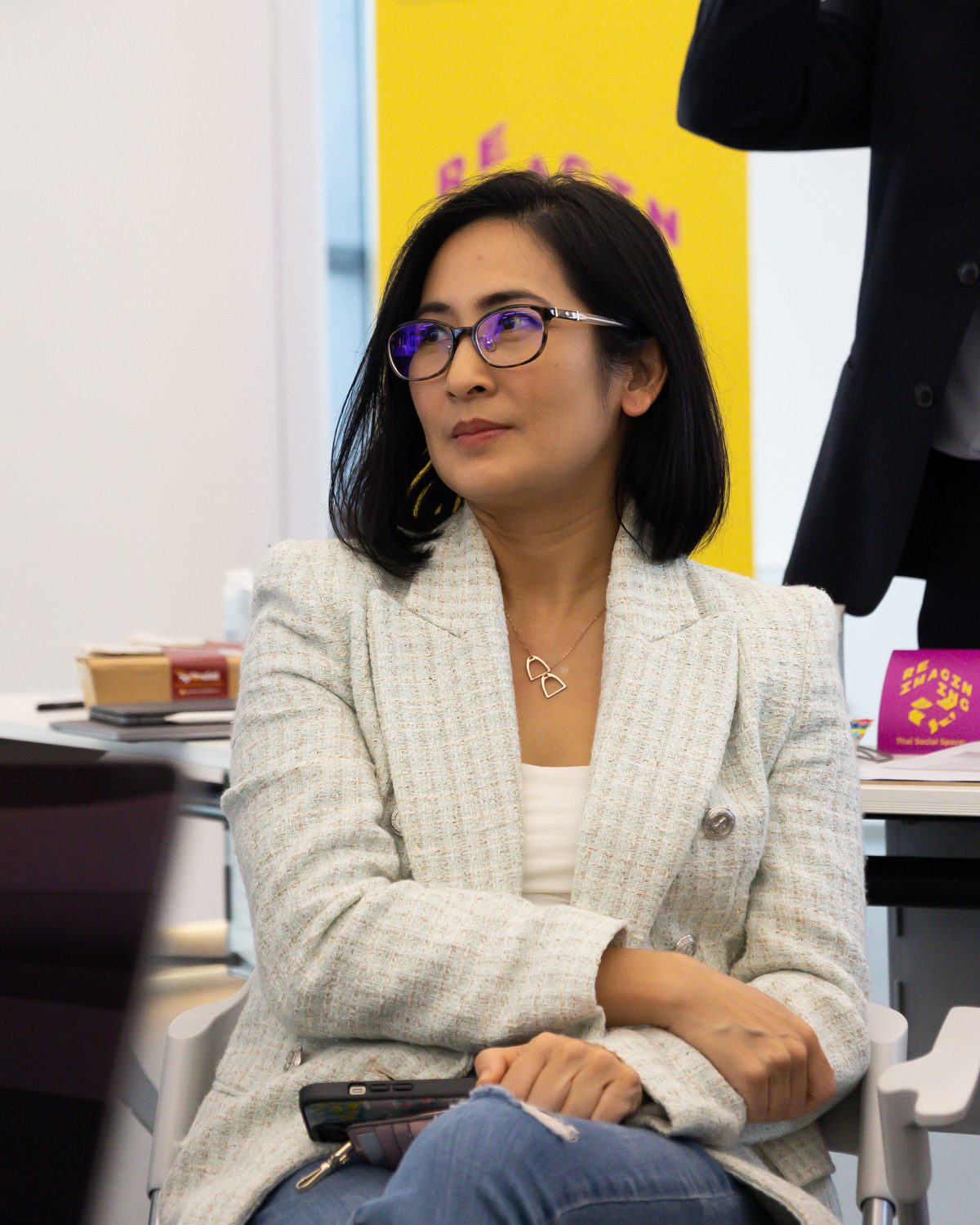
Karndee Leopairote Executive Vice President of FutureTales Lab by MQDC | Photo: Don Amatayakul
“We’ve seen evidence from around the world that festivals have the power to bring people together,” said Chaiyong Ratana-angkura, Chief Advisory to Creative Lab by MQDC, and the design competition’s organizer/judging panel, explained why “festival design” became the topic of this design competition. “Festivals have the ability to foster and encourage interactions between people and members of the community. They strengthen ties within a community or neighborhood, and as a developer, we don’t want to be detached from it but rather a part of it. However, new mindsets and cultures have emerged. This design competition is held to allow everyone to learn from the younger generation about what possible kinds of festivals we should hold or what type of interactions we should have with society.”
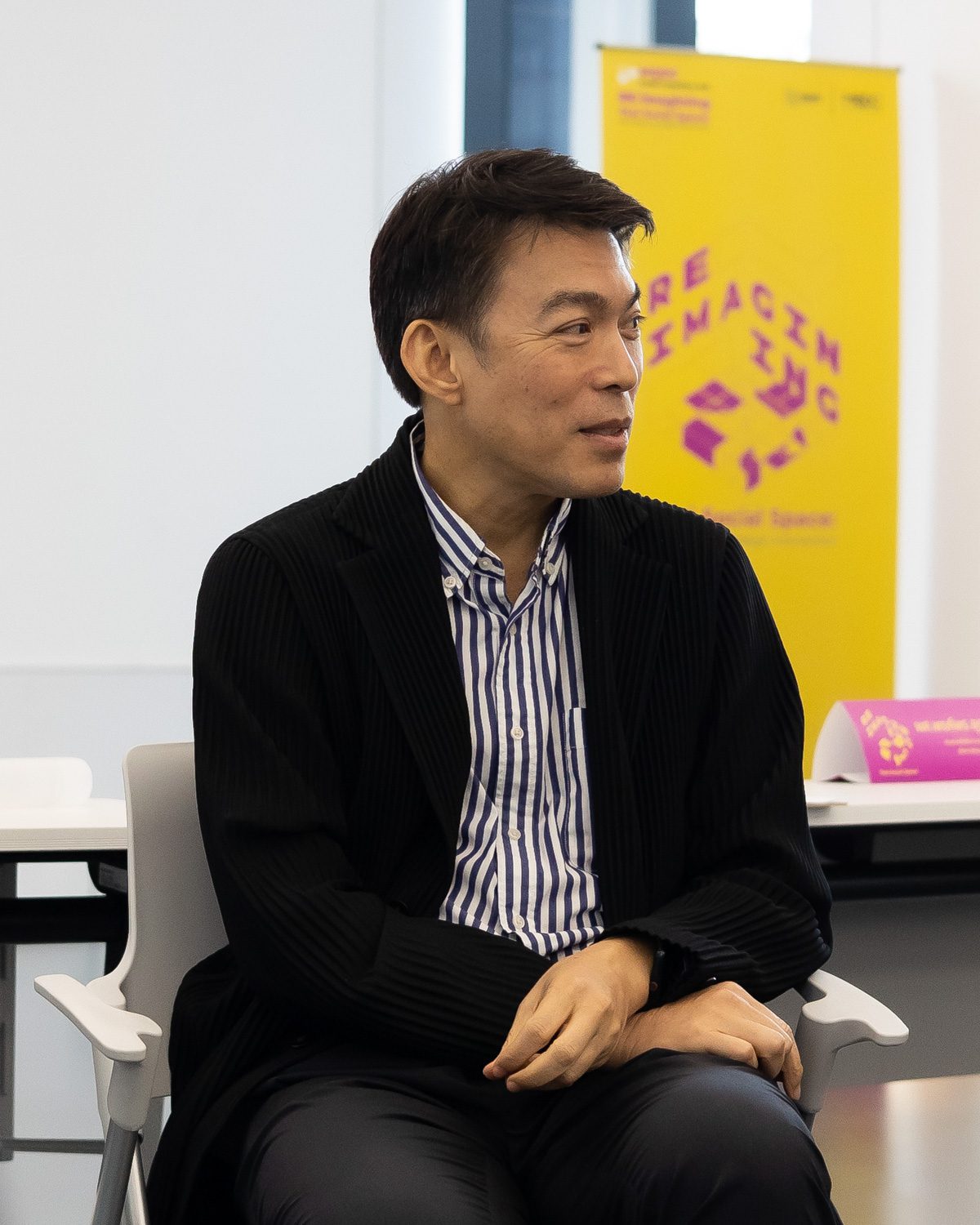
Chaiyong Ratana-angkura, Chief Advisory to Creative Lab by MQDC | Photo: Don Amatayakul
The task for participants was to design a temporary activity or festival that included the built environment, structures, and functional spaces. The contestants were given the option of selecting a site to work with, ranging from an empty space in front of buildings located in the project’s south Sukhumvit neighborhood, as suggested by the competition guidelines, to a public space in other provinces of Thailand.
“We carefully chose the south Sukhumvit neighborhood because it hasn’t had any widely recognized public events or festivals. The area will be turned into an innovative district in the future, so it is critical that the growth of the neighborhood and the community occur concurrently,” noted Chaiyong Ratana-angkura.
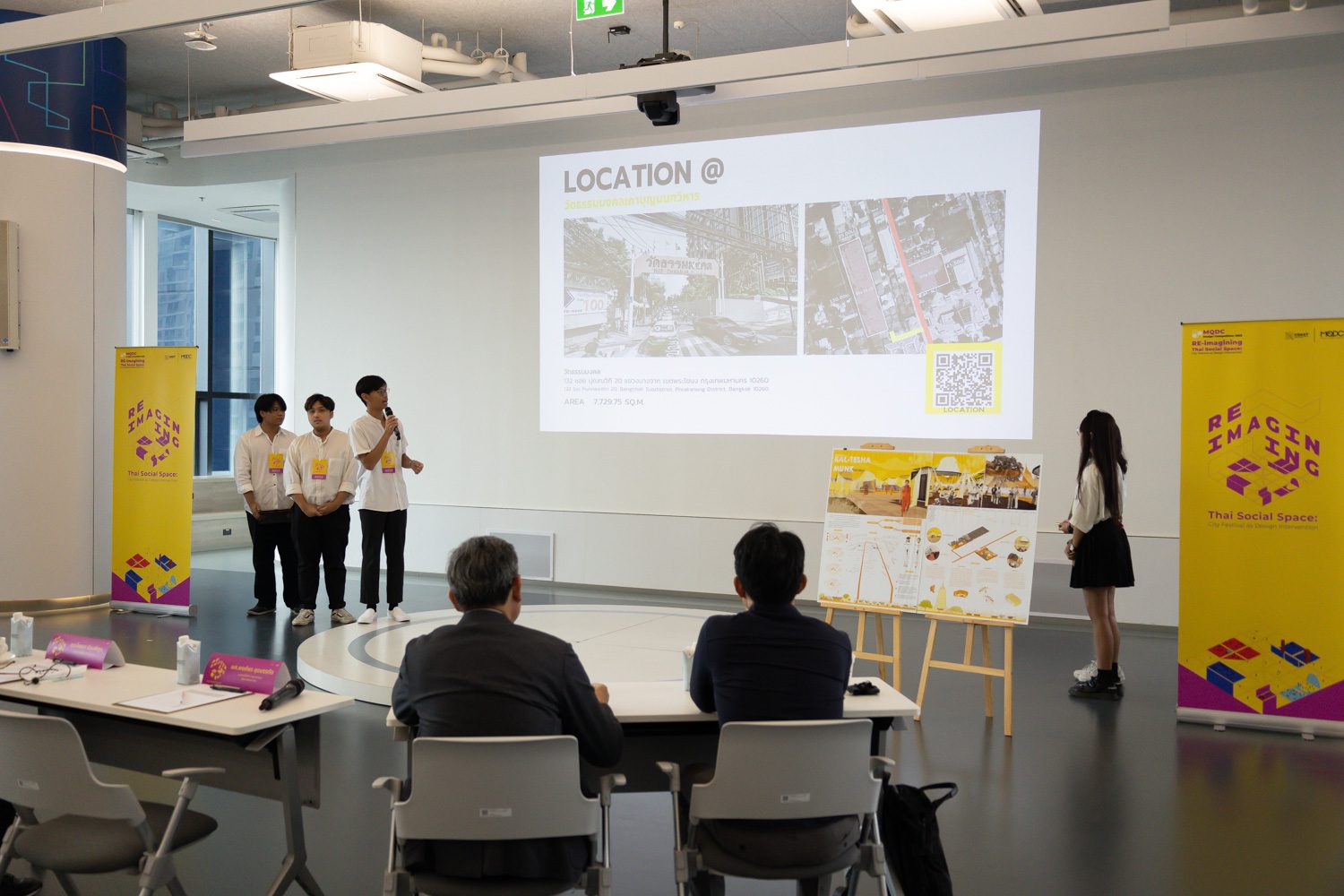
Photo: Don Amatayakul
“The competition is also open for competitors living outside of Bangkok to present their ideas in public spaces in their own provinces and experiment on how they can develop these communities that they are a part of.”
The judging team selects two projects as Gold Award winners from over a hundred entries in both the university and professional categories after an intensive selection process.
Larn La Korn: Reviving Neighborhood Spirit and Creative Power
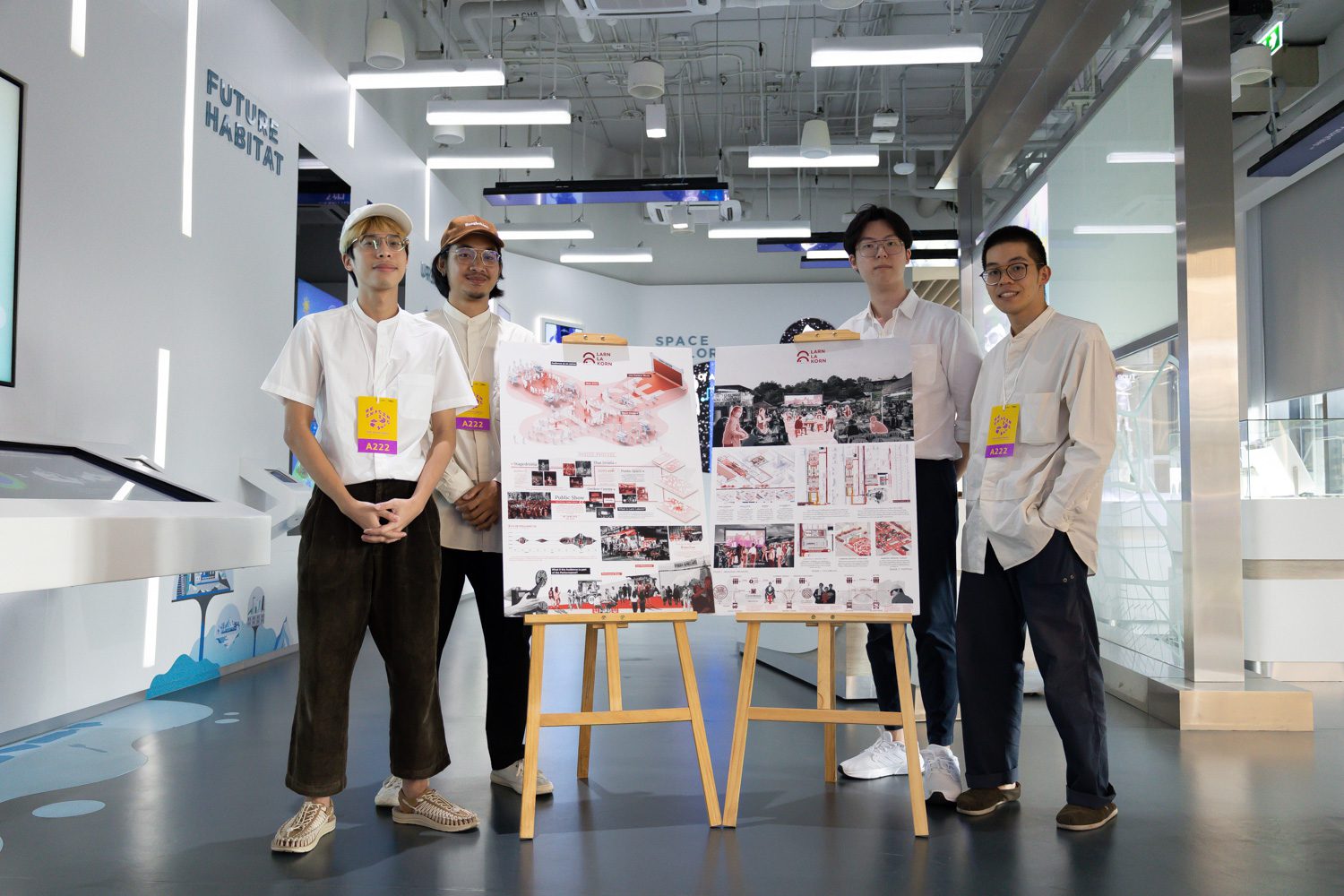
Photo: Don Amatayakul
“Larn La Korn,” or “outdoor theater,” the project by a team of Chulalongkorn University’s students, Chayapon Sitikornvorakul, Jirayut Wongjaroensatit, Wasin Shangchan, and Papatsorn Noppaiboonrat, is chosen as the winner of the university category.
The Larn La Korn crew transforms an activity area at Wat Thammongkol School into an outdoor theater where artists, actors, celebrities, and influencers may share and express their ideas and performances. They will be able to meet and interact with members of the community as well as visitors and event goers, all while contributing to the development of creative forces and the stimulation of the local economy.
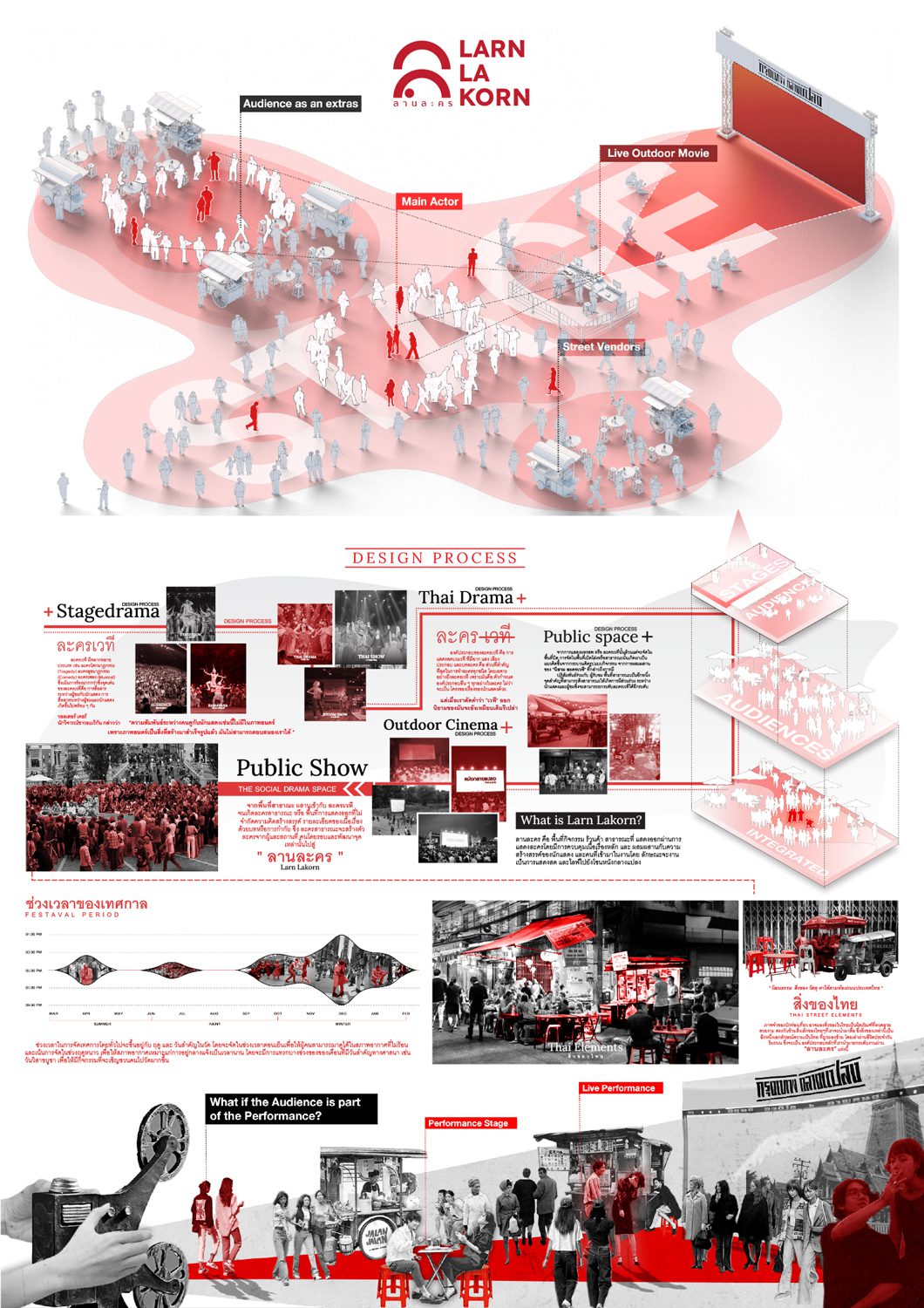
Photo courtesy of MQDC
The outdoor theater space is divided into two sections: the registration zone and the reception area, which welcomes people to learn more about the “Larn Lakorn Project” at a small exhibition space. The second zone includes a restaurant and stores, an outdoor cinema, and a screen for outdoor cinema activities and live broadcasts. Performances at this theater take place not on the stage, but in various corners of the space, allowing the audience to interact closely with the actors.
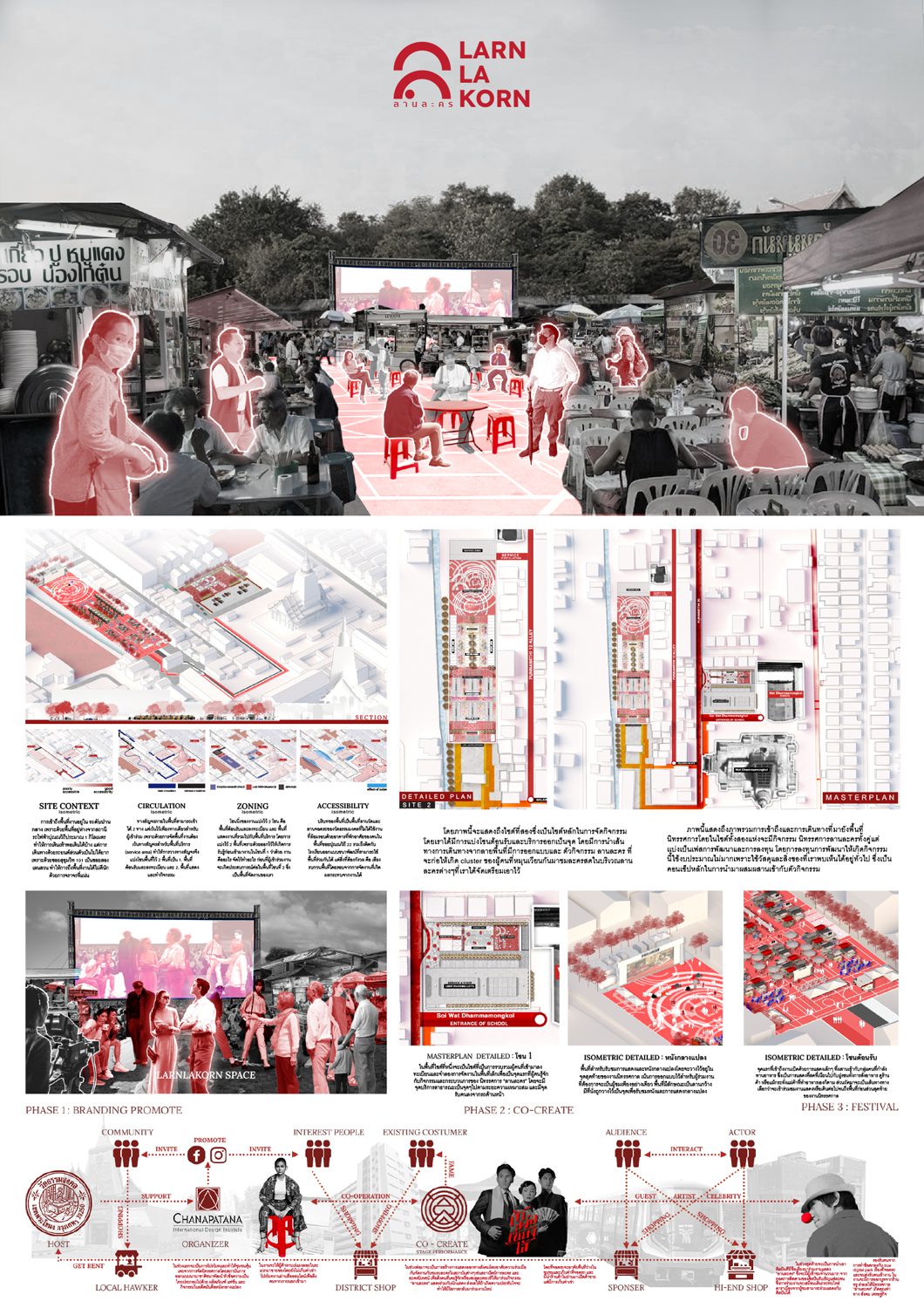
Photo courtesy of MQDC
The interior décor components are inspired by everyday items found in Thai people’s daily lives, such as plastic chairs, steel tables, and umbrellas, elevating mundane objects as part of the space and the performances.

Photo: Don Amatayakul
The Larn La Korn team does not believe that a performance must be limited to the confines of the theater. Performances can be turned into online content that promotes an artist’s creativity and ability to a larger audience. Given how the design considers and delivers such comprehensive components of a quality public space, it is no surprise that the idea was selected as the winner.
Omakase: Creating opportunities for a community through food

Photo courtesy of MQDC
The Omakase team, comprised of Sakdithat Pitakkotchakorn, Sitanan Teeracharoenchai, Thunda Rerkpaisan, and Phatchanon Varanukulsak, won the hearts of the judging panel in the professional category.
Omakase creates food festivals that turn Phra Khanong neighborhood’s shortcomings into opportunities. The team’s analysis of the neighborhood identifies four major issues with this particular Bangkok urban area, ranging from long side streets and alleyways with dead ends to public transportation that is difficult to access, causing local establishments to be located further into the side streets and less visible to the public. The other two difficulties are a lack of public spaces and their accessibility, as well as a large number of abandoned canals.
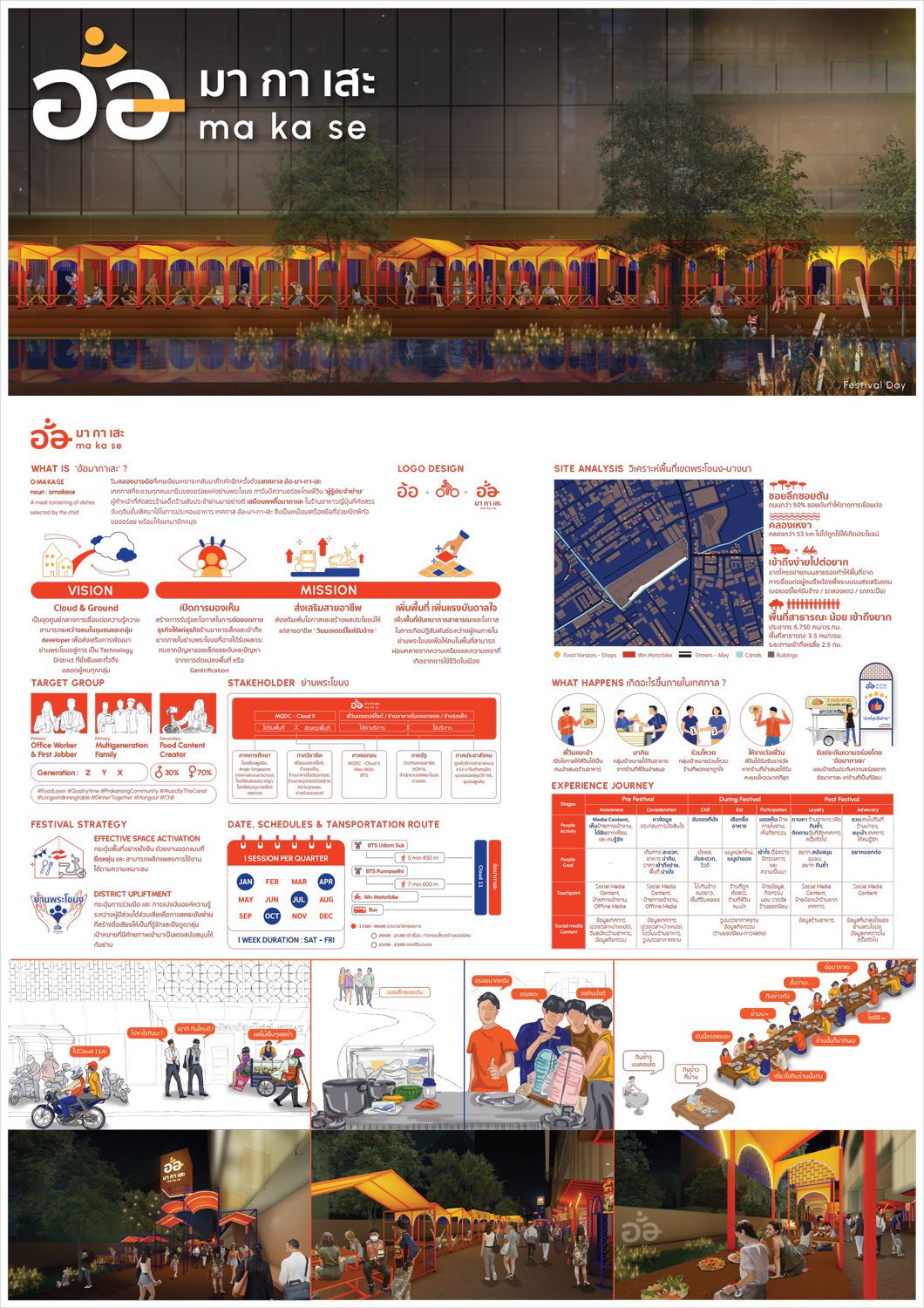
Photo courtesy of MQDC
Meanwhile, with the neighborhood’s future plan to become an innovation district and projects such as Cloud 11 being a new meeting point for Phra Kha Nong, the Omakase team works out these valuable assets and potentials into “Omakase,” a food festival by Bang-or Canal that will connect people in the neighborhood while creating new and equal economic opportunities for everyone, especially small entrepreneurs, through “food.”

Photo courtesy of MQDC
The festival’s designated venue is an area inside Cloud 11 community mall along Bang-or Canal. The team brings in local taxi motorbike riders, asking them to suggest food vendors, relying on their inside and out knowledge of the neighborhood based on their experiences going around the vicinity. The participating vendors could be a local restaurant on one of the side streets, but with the exposure they will receive from participating in the festival at Cloud 11, they will become better known and eventually attract more followers and regulars. The team also designed a system for the festival to allow consumers to vote for their favorite restaurants, and vendors with a high number of votes will earn a plaque, while motorcycle taxi riders who promote the most voted restaurants will receive a badge.
Neighborhood shophouse blocks served as inspiration for the four booth designs. The Row Tables and Row House are where visitors can sit down and enjoy their food, while the Food House and Condo Pavilion serve as landmarks or check-in points when the festival is not taking place. These components can be converted into resting and eating pavilions for local motorcycle taxi riders as well as commuters.
The Next Step
The design competition didn’t conclude with the selection and crowning of the winners. The owners of the sites that the competitors chose to work with will be asked to look at the winning projects’ ideas as well as those provided by the submitted entries. The ideas are hoped to be catalysts for future developments that can potentially take place within these spaces. “When the Phra Khanong District Office Director learned that we were planning a design competition, he became very excited about the types of festivals that the neighborhood could host. So, we’re eager to invite the local government and site owners to look at these ideas in the hopes that they will take something from these ideas that the competitors came up with for the development of their own spaces,” said Chaiyong.

Photo: Don Amatayakul
MQDC will continue its efforts in the next few years to put together more design competitions centered on cities and urban communities. We will keep you updated on which topics the competitions will take place in the coming years.
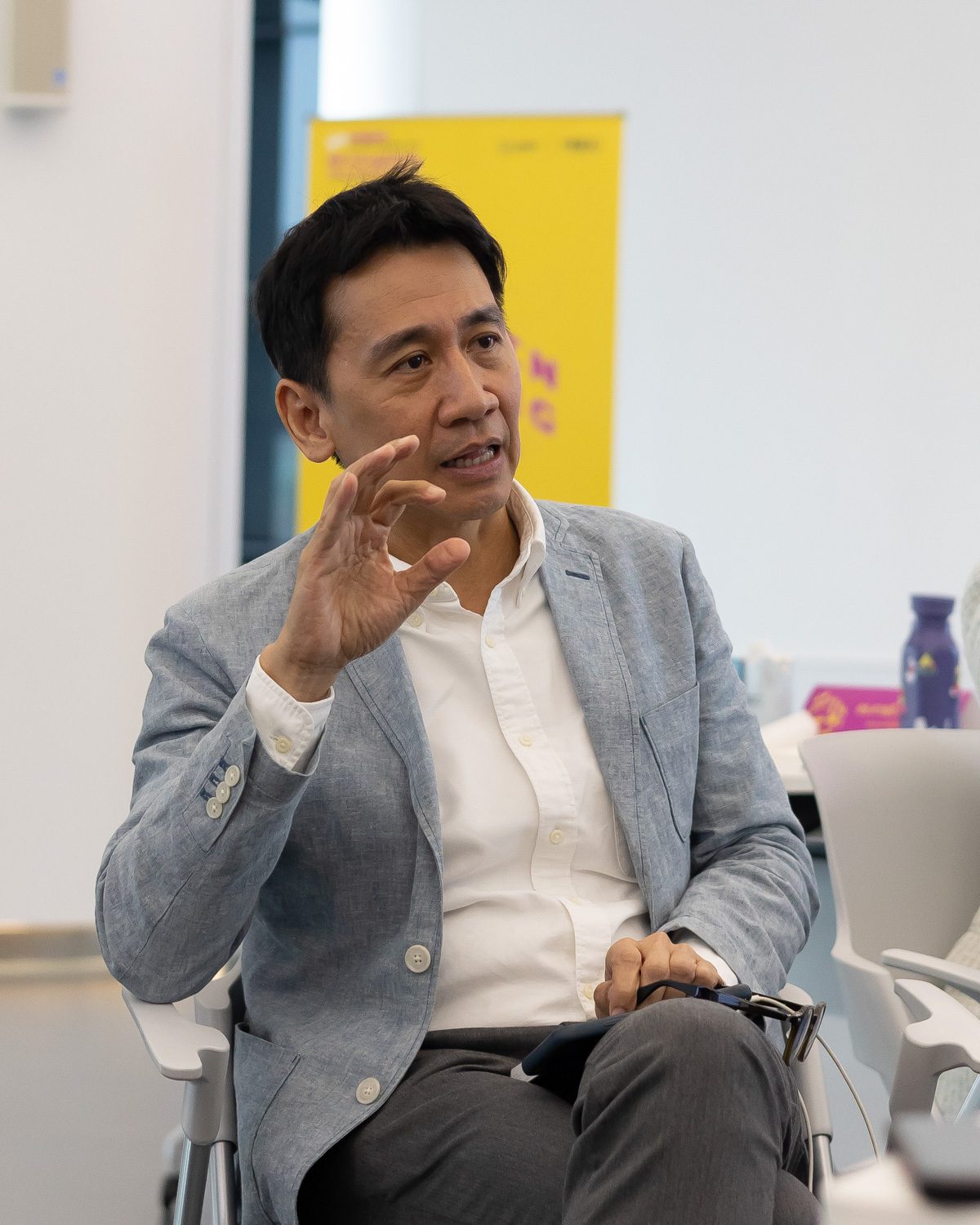
Singh Intrachooto, Chief Advisory to Research & Innovation for Sustainability Center (RISC) by MQDC | Photo: Don Amatayakul
“We are already planning the competition for next year. We’re brainstorming topics that will not only be interesting but also provide opportunities for younger competitors to participate. The topics we want to explore will still revolve around cities, communities, and society in general,” Dr. Singh Intrachooto, Chief Advisory to Research & Innovation for Sustainability Center (RISC) by MQDC and a member of the judging panel, stated.

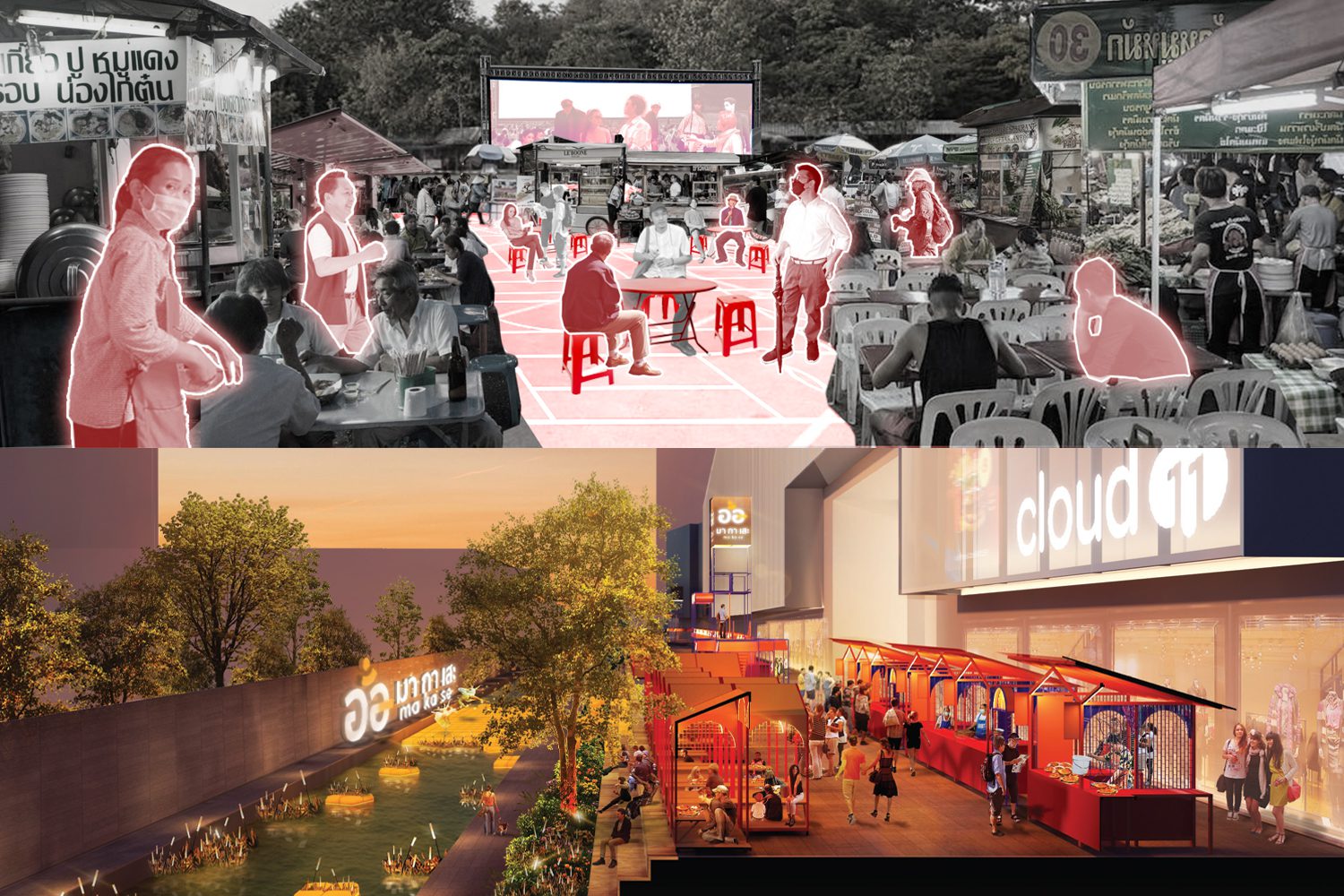 Photo courtesy of MQDC
Photo courtesy of MQDC